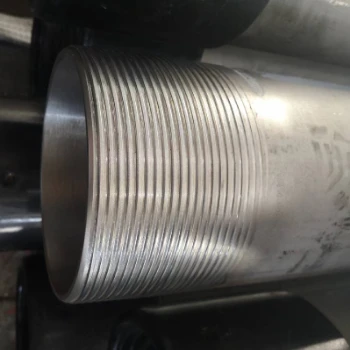- Afrikaans
- Albanian
- Amharic
- Arabic
- Armenian
- Azerbaijani
- Basque
- Belarusian
- Bengali
- Bosnian
- Bulgarian
- Catalan
- Cebuano
- Corsican
- Croatian
- Czech
- Danish
- Dutch
- English
- Esperanto
- Estonian
- Finnish
- French
- Frisian
- Galician
- Georgian
- German
- Greek
- Gujarati
- Haitian Creole
- hausa
- hawaiian
- Hebrew
- Hindi
- Miao
- Hungarian
- Icelandic
- igbo
- Indonesian
- irish
- Italian
- Japanese
- Javanese
- Kannada
- kazakh
- Khmer
- Rwandese
- Korean
- Kurdish
- Kyrgyz
- Lao
- Latin
- Latvian
- Lithuanian
- Luxembourgish
- Macedonian
- Malgashi
- Malay
- Malayalam
- Maltese
- Maori
- Marathi
- Mongolian
- Myanmar
- Nepali
- Norwegian
- Norwegian
- Occitan
- Pashto
- Persian
- Polish
- Portuguese
- Punjabi
- Romanian
- Russian
- Samoan
- Scottish Gaelic
- Serbian
- Sesotho
- Shona
- Sindhi
- Sinhala
- Slovak
- Slovenian
- Somali
- Spanish
- Sundanese
- Swahili
- Swedish
- Tagalog
- Tajik
- Tamil
- Tatar
- Telugu
- Thai
- Turkish
- Turkmen
- Ukrainian
- Urdu
- Uighur
- Uzbek
- Vietnamese
- Welsh
- Bantu
- Yiddish
- Yoruba
- Zulu
j55 coupling
Understanding J55 Couplings A Comprehensive Overview
In the world of oil and gas operations, the choice of materials and components is paramount to ensuring efficiency and safety. One such essential component is the J55 coupling, an integral part of the casing used in oil and gas wells. The J55 designation refers to a specific grade of steel pipe, which is critical for the structural integrity of drilling and production operations.
What is J55?
J55 is a type of steel pipe specified by the American Petroleum Institute (API) with particular emphasis on its mechanical properties and chemical composition. Primarily, J55 offers a tensile strength of 55,000 pounds per square inch (psi), making it suitable for a variety of applications within the oil and gas industry, particularly in less challenging environments compared to higher grade materials. This makes J55 a versatile choice for casing and tubing in both exploratory and production wells.
The Importance of Couplings
Couplings are critical components that connect segments of pipe together, ensuring a secure, leak-free assembly. The use of high-quality couplings is essential for maintaining the integrity of the entire piping system. In the case of J55 couplings, they are designed specifically to match the specifications of J55 steel pipes, facilitating seamless connections and transitions within the piping network.
Features of J55 Couplings
J55 couplings are known for their robust design and durability. They are typically manufactured using materials that complement the properties of J55 steel, ensuring that the coupling can withstand the same pressures and stresses as the pipes it connects. Key features include
1. High Strength and Integrity J55 couplings are engineered to support high tensile and yield strengths, maintaining structural integrity even under extreme operational conditions.
j55 coupling

2. Corrosion Resistance Many J55 couplings come with protective coatings or are made from materials resistant to corrosion, which is vital in the oily and often harsh environments of drilling sites.
3. Compatibility These couplings are designed to be compatible with J55 pipes, ensuring proper fit and functionality.
4. Ease of Installation Most designs prioritize ease of installation, reducing the time and labor costs associated with connecting pipes on site.
5. Cost-Effectiveness Given J55's position as a standard grade, couplings made from this material tend to be more economical compared to higher-grade alternatives, making them a preferred option for budget-conscious projects.
Applications of J55 Couplings
J55 couplings are predominantly used in shallow to moderate-depth wells. Their application spans across various stages of exploration, extraction, and production in oil and gas fields. They play a critical role in
- Casing Operations Protecting the wellbore by providing structural support and preventing collapse. - Production Systems Ensuring that fluids move efficiently from the reservoir to the surface.
Conclusion
In summary, J55 couplings represent a fundamental component in the successful operation of oil and gas wells, combining durability, cost-effectiveness, and compatibility within the J55 steel pipe family. As the industry evolves, advancements in material science and engineering may enhance their performance further, yet the foundational role of these couplings will remain integral to the viability of energy extraction processes. Choosing the right couplings can significantly impact operational efficiency, safety, and overall project success in the hallowed fields of oil and gas exploration and production.
-
Tubing Pup Joints: Essential Components for Oil and Gas OperationsNewsJul.10,2025
-
Pup Joints: Essential Components for Reliable Drilling OperationsNewsJul.10,2025
-
Pipe Couplings: Connecting Your World EfficientlyNewsJul.10,2025
-
Mastering Oilfield Operations with Quality Tubing and CasingNewsJul.10,2025
-
High-Quality Casing Couplings for Every NeedNewsJul.10,2025
-
Boost Your Drilling Efficiency with Premium Crossover Tools & Seating NipplesNewsJul.10,2025







